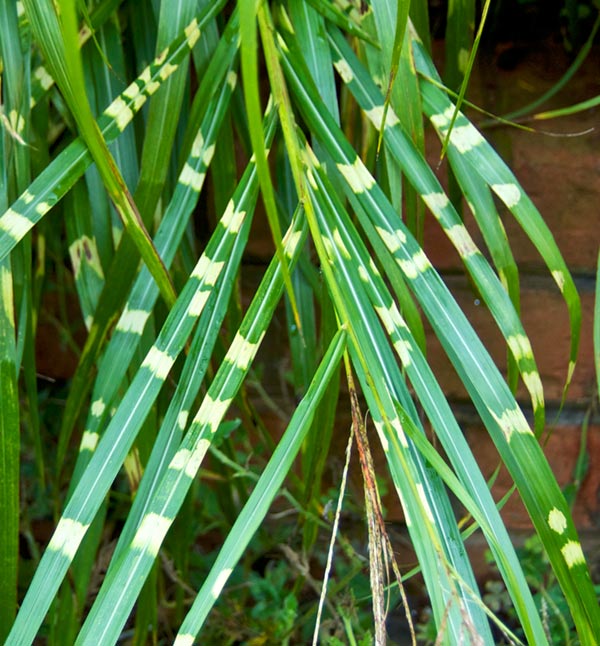Miscanthus sinensis is a perennial grass native to eastern Asia. It is commonly grown in our area as a deer-resistant ornamental. The variety shown here is called “Zebra Grass” because of the alternating green and white bands on the leaves. Technically it is variety “zebrinus”. The variation pattern is caused by irregular expression of a gene as the leaf grows. The green in plants is chlorophyll, and it is contained in small bodies called chloroplasts. Each plant cell has many chloroplasts. In our Zebra Grass above, the white bands are where the tissue does not support the growth of chloroplasts. Grass leaves grow from the base and get progressively longer as they grow; something like pulling a tape measure out of its case. Periodically, as the grass leaf extends from the base, it produces tissue that cannot support chloroplasts…then it switches back to producing tissue that can support chloroplasts.
There are several species of Miscanthus and many cultivars. One species, Giant Miscanthus, is being investigated as a source of biomass for ethanol production. A typical acre of corn (Zea mays) can produce about 756 gallons of ethanol. Giant Miscanthus can produce about 3200 gallons of ethanol per acre.



Interesting!!
I’m always amazed at the things you know